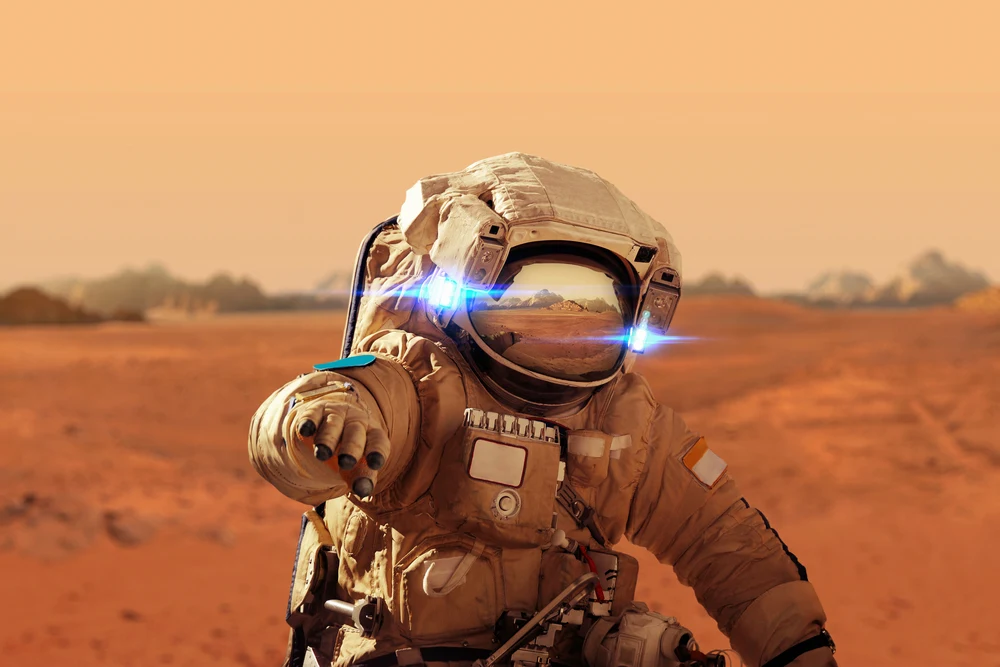50 Fascinating Facts About Life on Mars
Mars is the fourth planet from the Sun.
It has a thin atmosphere primarily composed of carbon dioxide.
The surface of Mars is covered in red iron oxide, giving it a distinct color.
Olympus Mons on Mars is the largest volcano in the solar system.
Valles Marineris is a vast canyon system on Mars.
The average temperature on Mars is around -80 degrees Fahrenheit (-62 degrees Celsius).
Also Read: The Untold Secrets of Mercury: 15 Fascinating Facts Revealed
Mars has polar ice caps made of water and dry ice.
Curiosity Rover has been exploring Mars since 2012.
The length of a day on Mars is about 24.6 Earth hours
Mars experiences dust storms that can cover the entire planet.
Phobos and Deimos are Mars' two small moons.
Also Read: From Ice to Ocean: Fascinating Penguin Facts Revealed!
Liquid water is not stable on the surface due to the low atmospheric pressure.
Mars's thin atmosphere allows for dramatic temperature fluctuations.
Mars once had a more substantial atmosphere and flowing water in the past.
The search for life on Mars includes studying potential microbial habitats.
The "Face on Mars" turned out to be a trick of light and shadow.
Also Read: 50 Mind-Blowing Facts About Dinosaurs That Will Change Your Perspective!
Mars has the tallest volcano, Olympus Mons, and the deepest canyon, Valles Marineris, in the solar system.
Some meteorites found on Earth are believed to be from Mars.
The ExoMars mission aims to search for signs of past or present life.
Mars has a gravity of about 38% of Earth's.
The thin atmosphere contributes to significant temperature drops at night.
Also Read: 5 Futuristic Science Exhibition Ideas You Can't Miss!
Mars' two moons are sporadically molded and reasonable caught space rocks.
A year on Mars is around 687 Earth days.
Methane in Mars' climate has ignited conversations about expected life.
Mars has the biggest residue storms in the planetary group.
The red shade of Mars comes from iron oxide, or rust, on its surface.
Also Read: Astrobiology: The Search for Extraterrestrial Life
The primary effective Mars wanderer was Sojourner, in 1997.
Mars' pivotal slant is like Earth's, prompting seasons.
Mars comes up short areas of strength for on-field, presenting its surface to sun-powered breezes.
The flimsy environment causes the Martian sky to seem butterscotch in variety.
The dry land on Earth is roughly equivalent to Mars' surface area. Mars' northern side of the equator is generally level, while the southern half of the globe has more cavities.
Also Read: Website Traffic || How to increase Website Traffic
The Phoenix lander affirmed the presence of water ice underneath the Martian soil.
Mars' flimsy air makes it try for a rocket to securely land.
Mars has one of the biggest effect holes, Hellas Planitia.
The primary close-up pictures of Mars were taken by Sailor 4 of every 1965.
The most noteworthy temperature recorded on Mars was around 70 degrees Fahrenheit (20 degrees Celsius).
Also Read: Quantum Computing: The Secret Weapon Revolutionizing Financial Services
The sparse atmosphere of Mars offers little shielding from solar and cosmic rays.
Dust villains, like twisters, happen oftentimes on Mars Mars' iron-rich surface gives it its rosy hue.
Understanding is a lander intended to concentrate on the inside of Mars. Mars' low climatic tension makes fluid water bubble at lower temperatures.
Mars' climate is around 95% carbon dioxide.
The idea of trenches on Mars once remembered to be proof of shrewd life, was exposed.
Also Read: From Sci-Fi to Reality: 5 Incredible Tech Facts You Won't Believe!
Mars' low climatic tension makes fluid water bubble at lower temperatures.
Mars' climate is around 95% carbon dioxide.
The idea of trenches on Mars once remembered to be proof of shrewd life, was exposed.
Mars' surface is plentiful in minerals like iron, magnesium, and aluminum.
The thin atmosphere makes parachute-assisted landings challenging.
Also Read: 50 Mind-Blowing Facts About Pi That Will Amaze You!
The meager climate makes parachute-helped arrivals testing.
The two moons of Mars are much smaller than the moon on Earth.
The slight climate takes into account more clear perspectives on the stars from Mars' surface.
Meteors burn up more slowly on Mars than they do on Earth due to the thin atmosphere.
Also Read: 50 Fascinating Facts About Zero: Exploring the Power of Nothingness
Posted By F A C T O L O G Y
"Factology " is a Fact Blog. Here you can find all kinds of facts and blogging-related content My name is Mihir Patel and I am a passionate blogger. Blogging has been my creative outlet for several years now, and I love the freedom it gives me to express myself and share my ideas with the world. Through my blog, I write about a wide range of topics that interest me, including technology, science, and space.
Tags: Space Facts



